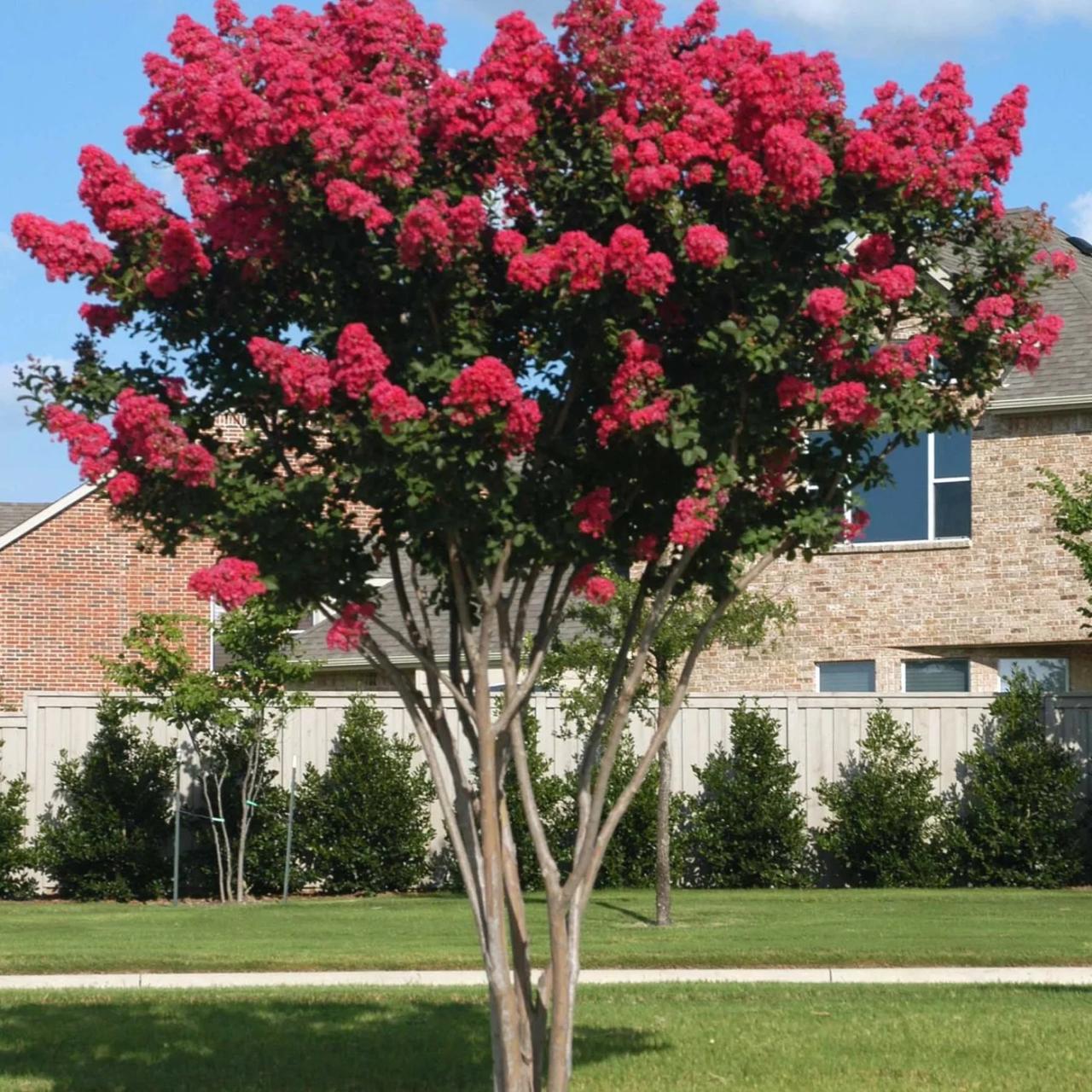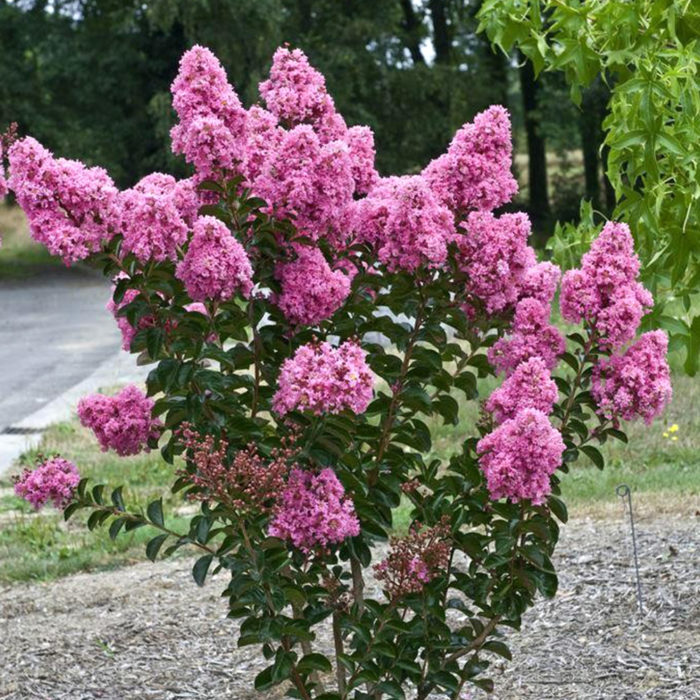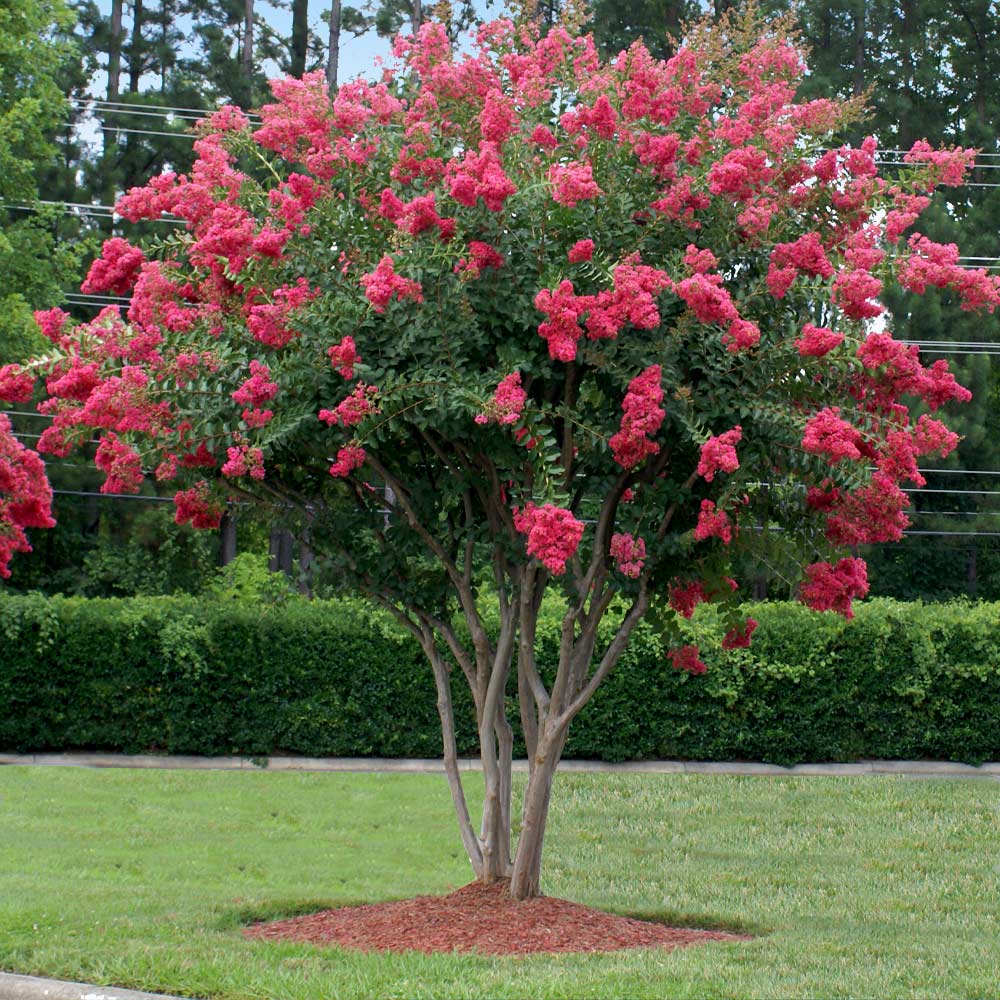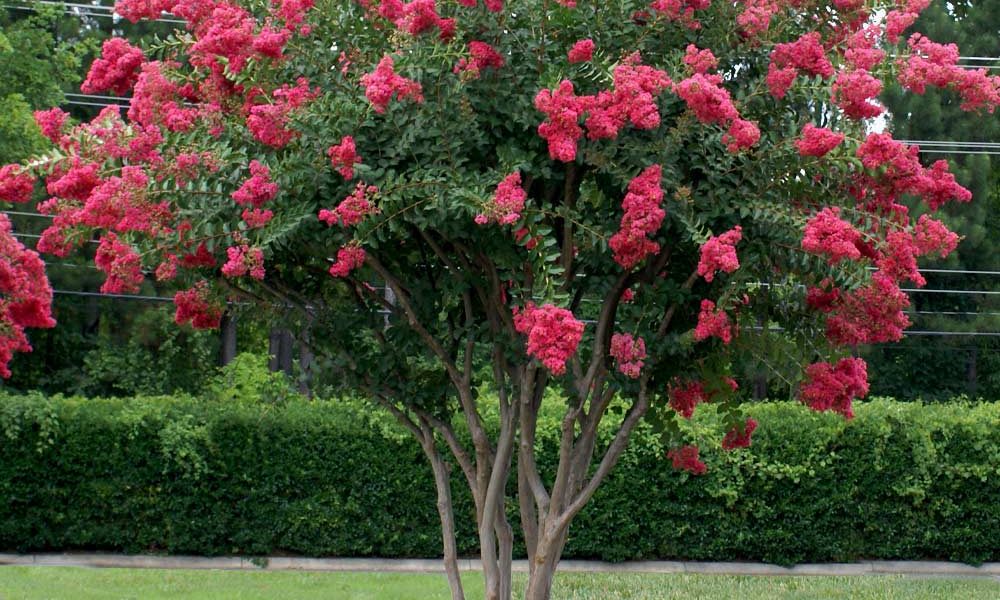When to Plant Crepe Myrtle Tree
Crepe Myrtle Varieties and Their Planting Needs

When to plant crepe myrtle tree – Choosing the right time to plant a crepe myrtle depends not only on your climate but also on the specific variety and the size of the sapling. While general guidelines exist, understanding the nuances of different varieties and their growth stages is crucial for successful planting and establishment. This ensures your crepe myrtle thrives and provides years of beautiful blooms.Crepe myrtles, scientifically known asLagerstroemia indica*, boast a wide array of cultivars, each with slightly different preferences.
These variations influence the ideal planting window, impacting factors such as root establishment and overall plant health. The size of the sapling you choose also plays a significant role, as larger, more mature plants require more time to adjust to their new environment.
Planting Times for Different Crepe Myrtle Varieties
While most crepe myrtles prefer planting in spring or fall, specific varieties may have slight preferences. For instance, some dwarf varieties might tolerate planting slightly later in the spring than larger, more vigorous cultivars. Always check the specific needs of the cultivar you’ve chosen, as detailed information is usually available from the nursery or online resources. The key is to select a time when the soil is workable and the weather is moderate, avoiding extreme heat or cold.
The ideal time to plant a crepe myrtle tree is in spring or early summer, after the last frost, allowing the roots to establish before winter’s chill. This careful timing ensures a healthy start, mirroring the thoughtful approach of initiatives like plant a tree israel , where the timing of planting is equally crucial for environmental success. Choosing the right planting time for your crepe myrtle, therefore, is key to its long-term flourishing, just as careful consideration is given to the best time for planting in other regions.
Influence of Sapling Size and Maturity on Planting Time
The size and maturity of your crepe myrtle sapling directly impact the optimal planting time. Smaller saplings, typically those under 3 feet tall, are generally more adaptable and can be planted over a broader window, potentially including late spring or even early summer in milder climates. Larger, more mature trees (over 5 feet) require more time to establish their root systems, making spring planting before the onset of hot weather the ideal choice.
Planting a larger tree in the fall allows for root development before the stress of the next growing season. Planting a large tree in summer can lead to transplant shock and reduced survival rates.
Planting Requirements for Three Distinct Crepe Myrtle Varieties
Understanding the specific needs of different varieties is essential for successful planting. Here’s a summary for three popular choices:
- ‘Natchez’ Crepe Myrtle: This is a popular cultivar known for its vigorous growth and profuse white blooms. It prefers full sun and well-drained soil. Planting in spring or early fall is recommended to allow ample time for root establishment before the onset of extreme weather. ‘Natchez’ thrives in USDA Hardiness Zones 7-9.
- ‘Tuscarora’ Crepe Myrtle: Known for its vibrant deep pink flowers, ‘Tuscarora’ is also a vigorous grower that thrives in full sun. Similar to ‘Natchez’, planting in spring or early fall is best. It’s also well-suited to USDA Hardiness Zones 7-9.
- ‘Acoma’ Crepe Myrtle: This dwarf variety is compact, reaching only 4-6 feet in height. Its lavender-pink flowers make it a favorite for smaller gardens. ‘Acoma’ is slightly more tolerant of less-than-ideal conditions and can often be planted slightly later in the spring than larger varieties. It thrives in USDA Hardiness Zones 7-10.
Preparing the Planting Site: When To Plant Crepe Myrtle Tree

Choosing the right location and preparing the soil are crucial steps for a thriving crepe myrtle. Proper site preparation ensures your tree has the best possible start, leading to vigorous growth and abundant blooms. Neglecting these steps can result in stunted growth, poor flowering, or even tree death.Proper soil preparation and site selection are essential for successful crepe myrtle planting.
Crepe myrtles prefer well-drained soil and ample sunlight to flourish. The planting hole needs to be appropriately sized to accommodate the root ball without restricting growth.
Soil Preparation and Amendment
Before planting, assess your soil. Crepe myrtles tolerate a range of soil types, but thrive in well-drained, slightly acidic soil (pH 6.0-6.5). If your soil is heavy clay, it will benefit from amendment to improve drainage and aeration. Sandy soils, on the other hand, may need organic matter to retain moisture. Amend heavy clay soils by incorporating several inches of organic matter such as compost or peat moss.
This improves drainage and provides essential nutrients. For sandy soils, adding compost helps retain moisture and nutrients. A soil test can provide precise information about your soil’s pH and nutrient levels, guiding your amendment choices. For example, if your soil test reveals a pH of 7.5 (alkaline), adding elemental sulfur will help lower the pH to the ideal range.
Sunlight Exposure and Drainage, When to plant crepe myrtle tree
Crepe myrtles need at least six hours of direct sunlight daily to bloom profusely. Select a planting site that receives full sun, avoiding areas shaded by buildings or large trees. Adequate drainage is paramount; crepe myrtles are susceptible to root rot in poorly drained soil. Observe the area after a heavy rain; if water pools for an extended period, it indicates poor drainage and an unsuitable planting site.
Areas with a slight slope are generally better choices than low-lying areas. Consider the mature size of the tree when choosing a location, ensuring it has enough space to grow without overcrowding.
Planting Hole Preparation
Dig a hole twice as wide as the root ball of your crepe myrtle. The depth should be equal to the height of the root ball. This allows for proper root expansion. For a crepe myrtle with a 12-inch diameter root ball, the hole should be approximately 24 inches wide and 12 inches deep. Avoid planting too deep; the top of the root ball should be level with the surrounding soil.
Once the hole is dug, gently loosen the soil at the bottom and sides to encourage root penetration. Do not amend the soil within the planting hole itself; amendments should be incorporated into the surrounding soil. This prevents the roots from being concentrated in a nutrient-rich area and encourages outward growth.
Planting Techniques and Aftercare

Planting your crepe myrtle correctly is crucial for its long-term health and vibrant blooms. Proper planting techniques minimize transplant shock and set the stage for a thriving tree. Following these steps will ensure your crepe myrtle establishes itself successfully in its new home.Planting your crepe myrtle involves several key steps. First, gently remove the tree from its container, being careful not to damage the root ball.
Loosen any circling roots that may have developed in the container. Dig a hole twice as wide as the root ball, but only as deep. This allows the roots to spread easily and prevents them from becoming waterlogged. Place the tree in the hole, ensuring the top of the root ball is level with the surrounding ground. Backfill the hole with the excavated soil, gently firming it around the base of the tree to eliminate air pockets.
Water thoroughly after planting to settle the soil and help the roots make contact with the surrounding earth.
Watering and Fertilizing Newly Planted Crepe Myrtles
Consistent watering is essential, especially during the first year after planting. Water deeply and regularly, especially during dry periods. Aim to keep the soil consistently moist but not waterlogged. Overwatering can lead to root rot, while underwatering can stress the young tree. For fertilization, a slow-release, balanced fertilizer applied in early spring is generally sufficient.
Avoid over-fertilizing, as this can lead to excessive vegetative growth at the expense of flowering. A light application of compost around the base of the tree can also provide beneficial nutrients.
Common Problems and Solutions After Planting
Several issues can arise after planting a crepe myrtle. Understanding these problems and their solutions can help ensure the tree’s success.
- Problem: Wilting or drooping leaves. Solution: This often indicates insufficient watering, especially during hot, dry weather. Check soil moisture regularly and water deeply as needed. Also, ensure proper drainage to avoid root rot.
- Problem: Yellowing leaves. Solution: This could be due to several factors, including nutrient deficiencies, poor drainage, or disease. A soil test can help determine nutrient levels. Improving drainage and addressing any disease issues are also important.
- Problem: Pest infestations. Solution: Crepe myrtles are susceptible to certain pests, such as spider mites and aphids. Regular inspection and prompt treatment with insecticidal soap or other appropriate pest control measures are crucial.
- Problem: Lack of flowering. Solution: This can result from over-fertilizing (which promotes leaf growth over flower production), insufficient sunlight, or improper pruning. Adjust fertilization practices, ensure adequate sunlight, and prune appropriately to encourage flowering.
FAQ Insights
Can I plant a crepe myrtle in the fall?
In milder climates (zones 7-9), fall planting is often possible, but spring planting is generally preferred for better establishment.
How deep should I plant a crepe myrtle?
Plant the crepe myrtle at the same depth it was in its container, ensuring the root flare (where the trunk meets the roots) is at or slightly above ground level.
What happens if I plant a crepe myrtle too deep?
Planting too deep can suffocate the roots, leading to poor growth or even death. The tree may also be more susceptible to disease.
How much sun does a crepe myrtle need?
Crepe myrtles thrive in full sun (at least 6 hours of direct sunlight per day).
How often should I water a newly planted crepe myrtle?
Water deeply and regularly, especially during dry periods, for the first year after planting to establish a strong root system.

